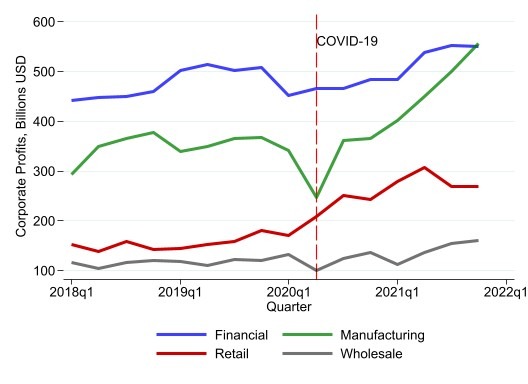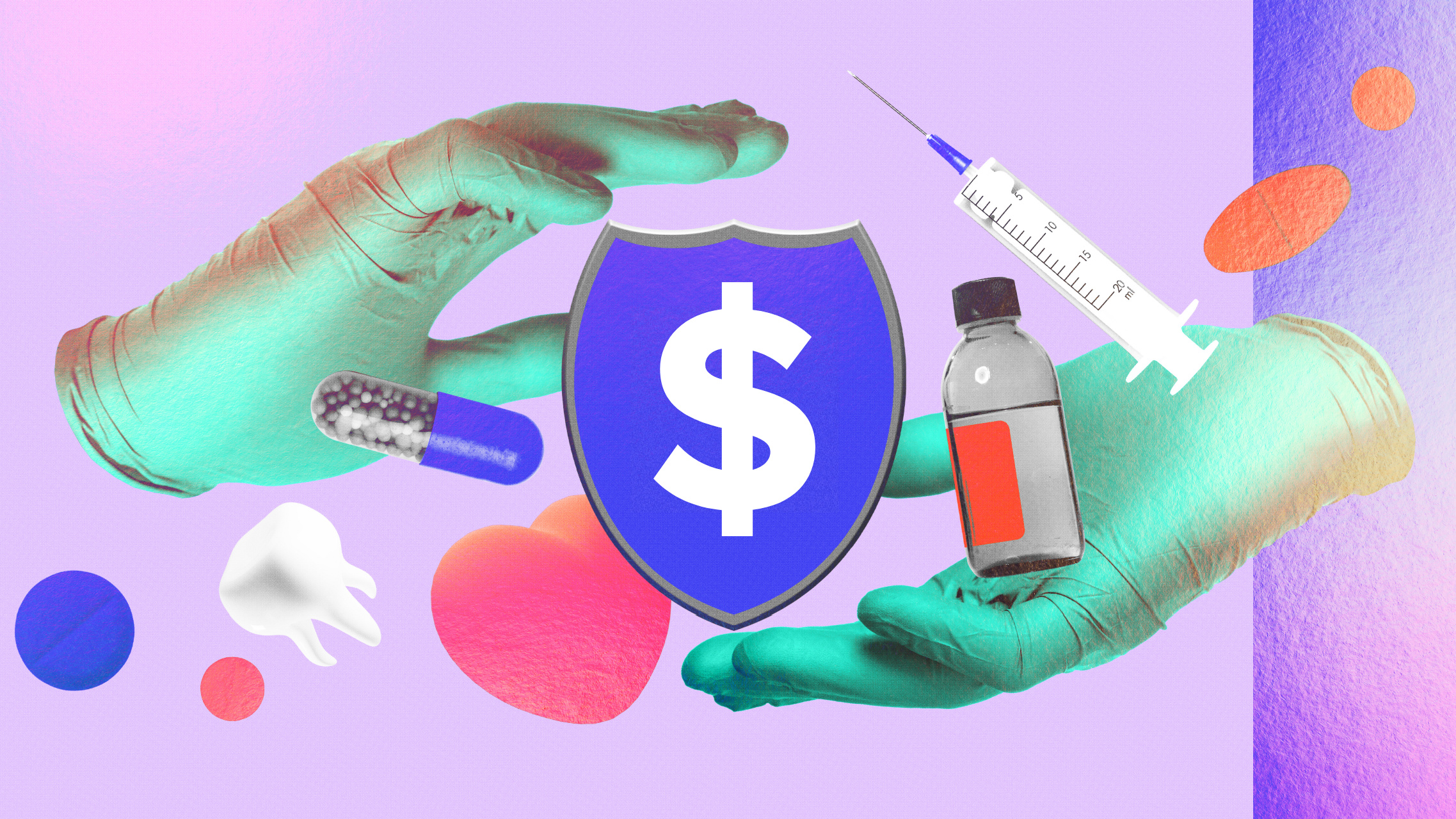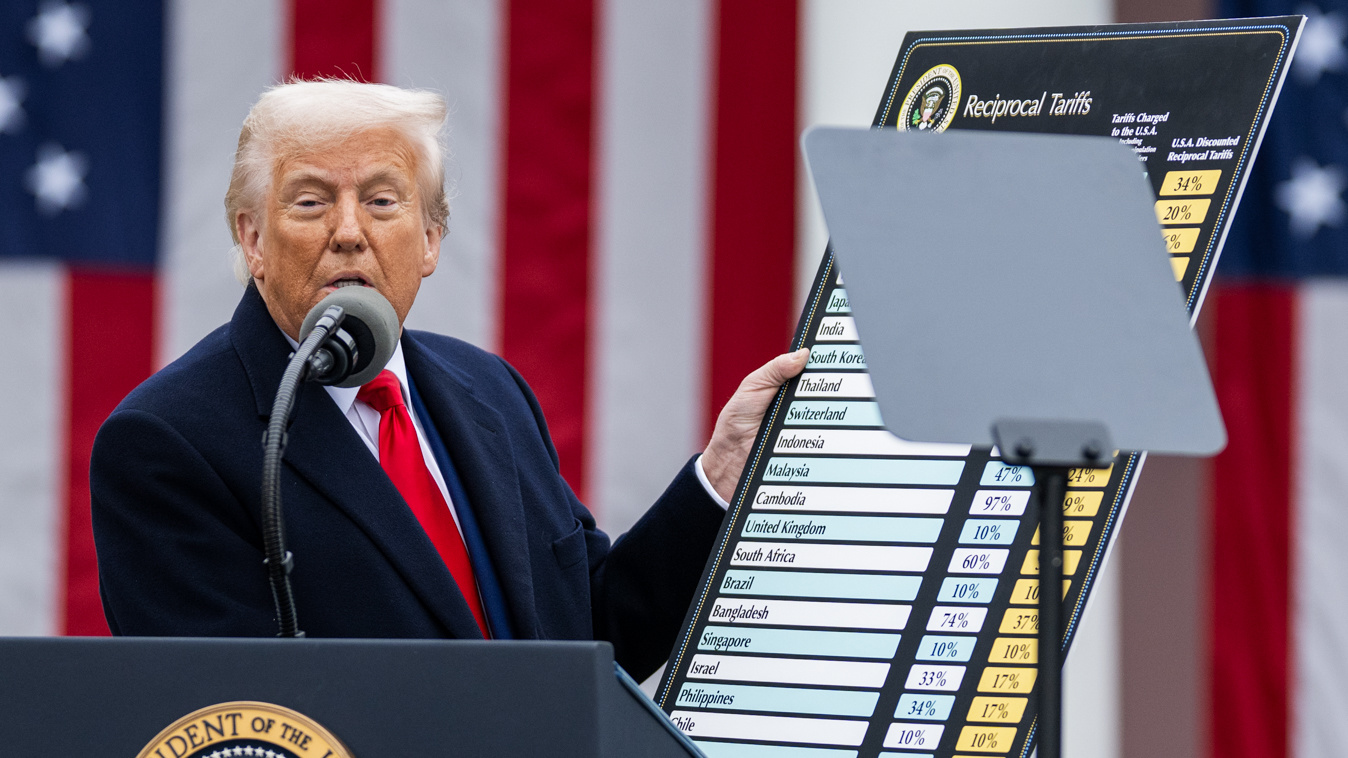Summary
- Corporate profits grew by double and sometimes triple digits during the COVID-19 pandemic. Worker wages did not.
- Record corporate profits did not stop these importers’ lobbyists from pursuing even higher profits by petitioning for 301 China tariffs exemptions.
- Removing tariffs on Chinese imports will only further enrich transnational enterprises that have profited during the COVID-19 pandemic and perpetuate a cycle of undercutting smaller domestic firms and workers.
- The gap between CEO and worker salaries increased during the COVID-19 pandemic.
- Consumers are unlikely to receive the benefit of tariff cuts in this environment of soaring profits and executive salaries.
- Policy makers should ignore calls to cut tariffs and increase imports from China, and instead they should incentivize domestic sourcing and strengthen U.S. supply chains.
Tariff Exemptions Are Unwarranted
The current high rate of inflation is largely a result of the crippling impact of COVID-19, both here and abroad. Major fiscal stimulus, supply chain shortages, lockdowns and a restricted workforce have all led to persistently higher prices.[1] Inflation is now 8.6 percent, the highest level in 40 years. The economic impact of COVID-19 has been dire on households and firms, and politicians including President Biden are looking for ways to alleviate the current inflationary pressures.
While there is a desperate need to address inflation, importers have used this crisis to lobby the White House for their long-running pre-COVID desire to remove tariffs. However, their desire to cut tariffs is unrelated to inflation concerns because these importers have experienced double and even triple digit income growth during COVID. Below in Table 1 are ten importers that petitioned the U.S. Trade Representative (USTR) for exemptions from the China tariffs in late 2021.
Table 1: Growth in Net Income and Tariff Exclusion Petitions from Nov-Dec. 2021
| Company | Net Income ($ Millions) | Change Net Income ($ Millions) | % Change | No. Tariff Petitions | Date Requested | ||
| 2019 | 2020 | 2021 | |||||
| Apple | 55,256 | 57,411 | 94,680 | 39,424 | 71.3% | 8 | Dec 2021 |
| 34,343 | 40,269 | 76,033 | 41,690 | 121.4% | 4 | Nov-Dec 2021 | |
| Home Depot | 11,121 | 11,242 | 12,866 | 1,745 | 15.7% | 10 | Dec 2021 |
| Tesla | (870) | 690 | 5,524 | 6,394 | 734.9% | 3 | Dec 2021 |
| Toyota | 14,068 | 15,213 | 16,775 | 2,708 | 19.2% | 4 | Nov-Dec 2021 |
| Polaris | 324 | 125 | 494 | 170 | 52.4% | 13 | Nov-Dec 2021 |
| Whirlpool | 1,184 | 1,075 | 1,783 | 599 | 50.6% | 8 | Nov 2021 |
| Otis | 1,116 | 906 | 1,246 | 130 | 11.6% | 3 | Nov 2021 |
| HP Inc. | 3,152 | 2,844 | 6,503 | 3,351 | 106.3% | 4 | Dec 2021 |
| Newell Brands | 186 | (770) | 572 | 386 | 207.5% | 3* | Nov 2021 |
Source: Income data from the Wall Street Journal, Tariff Petitions from the USTR Public Docket[2]
*Petitions under Coleman and Sunbeam subsidiaries
Last year Apple reported a net income of $94 billion, which is 71% higher than pre-COVID levels. Despite this success, Apple still requested tariff exceptions eight times last December. Apple’s businesses performed so well that CEO Tim Cook took home nearly $100 million in 2021, an income that is 1,447 times larger than an average Apple employee. [3] Cook also earned an additional $754 million in a 10-year grant of shares.[4] Also on this list is Tesla, which went from a loss of $870 million pre-COVID to a net income gain of over $5 billion in 2021- or a 734% increase. Tesla CEO Elon Musk has traditionally earned a modest salary (zero in 2020), however Musk earned an extraordinary 23.5 billion in 2021.[5]
Newell Brands, which owns several companies such as Coleman, Rubbermaid, Sunbeam, Oster, and many more, submitted petitions under the names of various subsidiaries to cut China tariffs at the end of 2021, despite a 207% gain in net income between 2019 and 2021.
Using a similar measure, the Economic Policy Institute (EPI) reports a CEO-to-Worker compensation ratio using data going back to 1965. EPI finds that this ratio reached one of its highest levels in 2020 during COVID, where CEOs earned 351 times as much as an average worker.[7]
Corporate Profits Have Increased Across the Board
While Table 1 offers examples of businesses that are household names, corporate profits have been higher across the board since COVID, shown in Figure 1 below.
Pre-COVID, corporate profits in the financial services sector were $452 billion dollars; today profits have increased to $550 billion. In the manufacturing sector, corporate profits have seen even higher gains. Pre-COVID, profits were $340 billion. Today, profits have increased by 63% to $555 billion dollars. Retail profits increased by 57% from $171 billion to $269 billion. Lastly, wholesale trade has also increased from $131 billion to $160 billion by the end of last year. Overall, the manufacturing goods sector experienced the largest increase in corporate profits since COVID began, a fact that reflects the shift in demand from services to goods consumption during COVID.[8]
Figure 1: Corporate Profits by Major Industry

Source: U.S. Bureau of Economic Analysis
Corporate Profits during COVID did not help offset worker hardships from COVID
The Brooking Institute found that 22 major U.S. companies spent five times as much on additional dividends or stock buybacks compared to pay for workers in 2020. Their study included major companies such as Costco, UPS, Amazon, Best Buy, CVS, Walmart, Target, and McDonalds. Brookings estimates that since COVID, wages for workers increased by at most 5%, all of which is negated by the current high rate of inflation. Conversely, shareholder profits grew on average by $1.5 trillion, with workers receiving only 2% of this gain.[9]
The Washington Post also reported that many of the largest U.S. firms laid off over 100,000 workers while turning a profit to shareholders in 2020. Larger firms, however, are in a better position to survive a multi-year global economic crisis than smaller ones. Larger firms have more resources, can shift losses in different markets, and can cut costs/produce more efficiently. However, despite these advantages, The Washington Post report found that larger firms laid off a larger share of their workers (9%) than smaller firms (7%) during COVID.[10]
Conclusions
Fiscal stimulus, combined with supply chain shortages and shifting demand, have helped raise corporate profits during the COVID era. Many large firms not only survived COVID, but also flourished at unprecedented levels. Despite their successes, many importers are seeking even higher profits by trying to convince politicians they need tariff relief. In reality, removing tariffs will only further enrich the richest and perpetuate a cycle of undercutting U.S. firms and workers, only to marginally reward the most profitable enterprises.
The COVID era has been devastating for countless people. Families are now facing unprecedented rates of high inflation and Washington is motivated to act. But instead of adding fuel to the fire that has been burning down the U.S. manufacturing industry, policy makers should adopt policies to build a stronger U.S. supply chain to reduce the inflationary risks of a global crisis.
References
[1] For an outline of the major drivers of inflation see: Amanda Mayoral, “Tariffs Could Have Helped Us Avoid the Current Inflation Spike”, Coalition for a Prosperous America, May 13, 2022, https://prosperousamerica.org/tariffs-could-have-helped-us-avoid-the-current-inflation-spike/
[2] https://comments.ustr.gov/s/docket?docketNumber=USTR-2021-0019
[3] Reuters, “Tim Cook earned over 1,400 times the average Apple worker in 2021”, January 7, 2022
[4] Kif Leswig, “Here’s how much money Apple CEO Tim Cook made in 2021”, CNBC, January 6, 2022
[5] Ashley Lutz, Maria Aspan, and Scott Decarlo, “The top 10 highest paid CEOs of the Fortune 500”, Fortune, May 28, 2022
[6] Based on 2019 average worker salary: Tom Huddleston Jr, “Study: Big company CEOs make $1.3 million more than their employees, on average”, CNBC, December 9, 2021
[7] Lawrence Mishel and Jori Kandra, “CEO pay has skyrocketed 1,322% since 1978”, Economic Policy Institute, August 10, 2021
[8] See an explanation of demand changes during COVID and inflation in (1)
[9] Molly Kinder, Katie Bach, and Laura Stateler, “Profits and the Pandemic: As shareholder wealth sored, workers were left behind”, Brookings Institute, April 21, 2022
[10] Douglas MacMillan, Peter Whoriskey and Jonathan O’Connell, “America’s biggest companies are flourishing during the pandemic and putting thousands of people out of work”, The Washington Post, December 16, 2021











